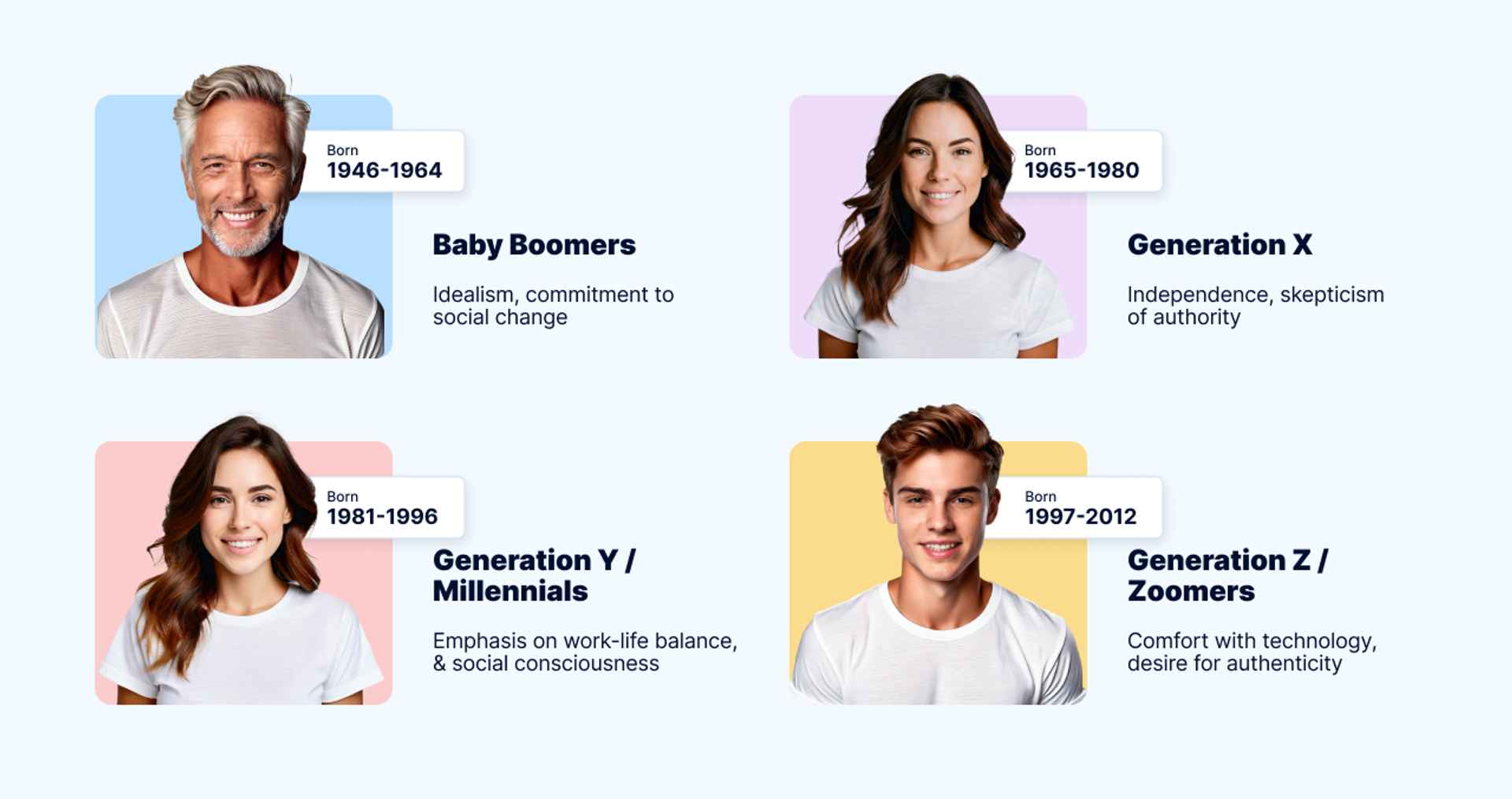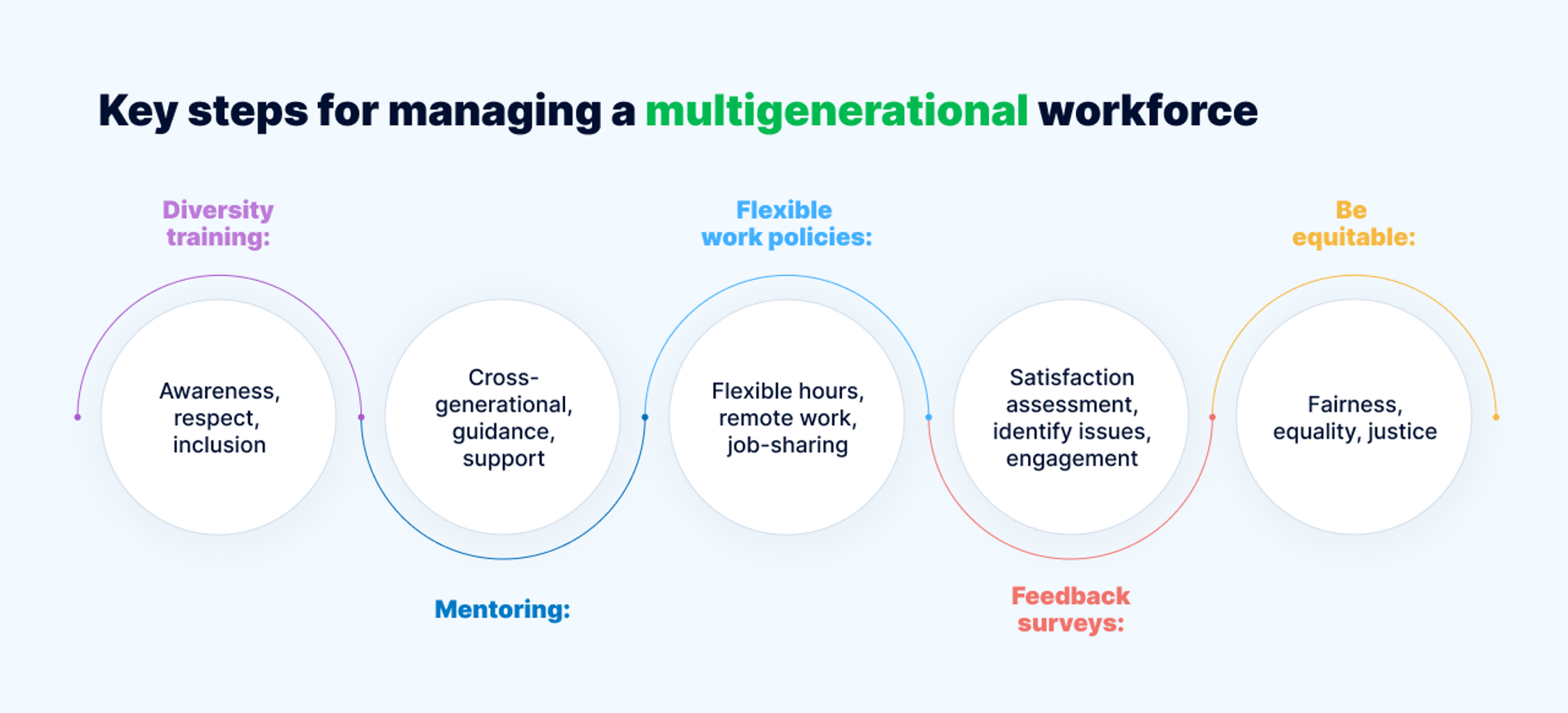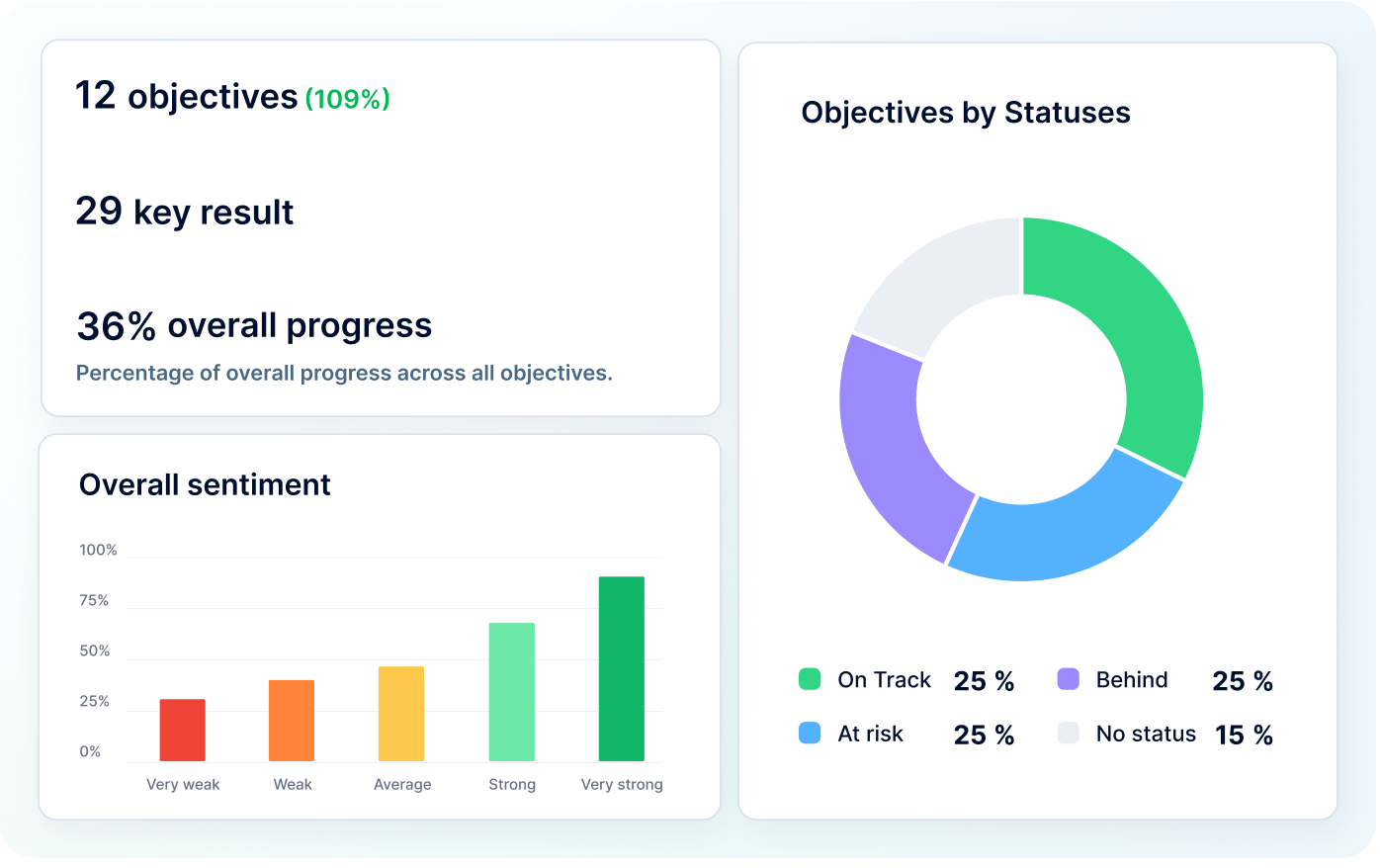
Top tips and strategies for working with different generations
We're living in unique times: today, four generations are working in the job market at the same time. This situation is complicated by several factors, especially the noticeable gap between them due to digitalization and the potential threat of a labor deficit as older generations retire, leaving younger ones less experienced, etc.
More than that, the world is becoming open to having multiple generations working together in the same workplace environment – imagine going through this, for example, while working remotely. It's already challenging to understand and collaborate with younger or older colleagues, and now you might never even see them in person.
This leads to difficulties in working with different generations, and it's our task as HR experts to figure out what to do in teams consisting solely of one generation or a mix of generations. What should we do in different situations?
That's exactly what our article today is about. Let’s examine the issue of getting different generations to work well together and how to maximize the potential of older/younger colleagues and peers.
What are the 4 different generations in the workplace?
Right now, four different age groups are working worldwide. Some companies have a mix of all these age groups, especially big corporations, while others, like startups, might have mostly younger people. Let's explore these age groups further:
Baby Boomers | Born 1946-1964 |
|
Generation X | Born 1965-1980 |
|
Generation Y / Millennials | Born 1981-1996 |
|
Generation Z / Zoomers | Born 1997-2012 |
|
What are the benefits of a multi-generational workplace?
One of the most significant advantages of a multi-generational workplace is the diverse perspectives that each generation brings. With different life experiences, values, and attitudes, employees from different generations can bring a range of viewpoints and ideas to the table, leading to more creative solutions to problems. Additionally, having multiple generations in the workplace can facilitate employee knowledge transfer.
For example, older workers often have a wealth of knowledge and experience that they can pass on to younger colleagues, which can help to preserve institutional memory and ensure that critical skills are not lost as older workers retire. Similarly, younger workers can bring new ideas and technologies to the organization, which can help to keep the business innovative and competitive. This represents a knowledge-based ecosystem where all benefit from the exchange of experience.

A multi-generational workplace can provide opportunities for learning and growth and employees from different generations can learn from each other, which can lead to personal and professional development. Younger workers can learn from the experience of older colleagues, while older workers can benefit from the technological expertise of their younger peers. Collaboration can also be improved in a multi-generational workplace as with a mix of work styles and preferences, different generations can learn to work together to appreciate each other's strengths and contributions.
Also, utilizing a multi-generational workplace can help to reduce age bias and stereotypes. Employees can build a more inclusive and diverse workplace culture by valuing each other's contributions and working together. This can lead to a more engaged and motivated workforce, as employees feel valued for their skills and contributions rather than their age or generation.
What are the drawbacks of a multi-generational office?
While a multi-generational workplace is generally speaking a benefit to most companies it can involve some drawbacks, including communication difficulties, generational stereotypes and biases, resistance to change, different work styles and priorities, clash of values, and difficulty in managing. Different generations may have different communication styles, preferences, and habits, which can lead to misunderstandings, misinterpretations, and conflicts. Also, age-based stereotypes and biases can lead to prejudice, discrimination, and unfair treatment of employees.
Older employees may resist new technologies or work practices, while younger employees may resist established ways of doing things. Different generations may have different work styles, priorities, and expectations, which can cause conflicts or misunderstandings. Additionally, different generations may have different values and beliefs, which can lead to clashes and tensions in the workplace based on external factors like politics.
Managing a multi-generational workforce can be challenging for supervisors and managers too as they need to balance the different needs and preferences of employees from different generations. This is more of a drawback for less experienced HR professionals, and there are ways to mitigate the effects of this problem. Using automated HRM software for example to eliminate routine tasks and allow you to focus more on human issues, is a good way around this.
How do you manage a multigenerational office as an HR professional?
Managing a bunch of people from across multiple generations might sound like herding proverbial cats, and of course, it can be a challenge. However the task is not as insurmountable as it may seem, and there are a few key steps you can follow to do so successfully.
- Provide diversity training:
Provide training that focuses on diversity and inclusion in the workplace. This training should raise awareness of generational differences and promote understanding and respect between generations.
- Encourage mentoring:
Facilitate mentoring relationships between employees from different generations. Encourage younger employees to seek mentorship from older colleagues and vice versa.
- Flexible work policies:
You can initiate flexible work policies that cater to the diverse needs and preferences of employees from different generations. This could include flexible work hours, remote work options, or job-sharing opportunities.
- Publish feedback surveys:
Publish regular surveys to assess employee satisfaction and identify areas where generational differences may be causing issues. This will boost employee engagement and satisfaction.
- Always be equitable:
Ensure that HR policies, practices, and procedures are fair and equitable for all employees, regardless of age. This could include policies related to recruitment, training and development, and performance management.
By following these strategies, HR managers can effectively manage a multi-generational office and promote harmony between their team members. Of course, this applies across the board, but if you want to focus on specific generational cohorts like Baby Boomers, you have to be more specific. Let’s take a look at how.
How do you engage older generations in the workplace?
To engage Baby Boomers it's important to make sure they have professional development opportunities that allow them to learn new skills and advance their careers. Encouraging mentorship is also beneficial, as boomers can offer valuable insights and guidance to younger employees while also learning from them. Remember, this group often feels overwhelmed by the pace of technological change, so always try to support them during this process.
Baby Boomers are 15% more likely to apply to remote-work positions than other generations. They may be looking to integrate work into the rest of their lives, rather than trying to balance two things they once saw as fundamentally separate.
Offering flexible work arrangements, such as part-time work or telecommuting, can help boomers balance work and other responsibilities, especially if they’re parents or have come out of retirement. If that’s not possible, try to ensure that all staff members are able to recognize their contributions to the company. You can achieve this by using a tool that provides high-quality feedback and custom target setting.

How do you attract older workers?
So you recognize that including Baby Boomers in the team ain’t all that bad, in fact, it’s a tremendous advantage. What’s the next step? That’s attracting people from this age cohort to your company and you can do that by implementing the following initiatives:
- Highlight your company’s culture
Baby Boomers tend to be loyal to their employers so make sure you highlight your company’s culture. Emphasize the company's commitment to creating a multigenerational workplace, one that values this age group’s experience. - Promote work-life balance
Many older generations are looking for work-life balance and opportunities to pursue other interests. Promote work-life balance benefits, such as flexible schedules, paid time off, and caregiving support programs. - Offer development opportunities
Older generations are often looking for opportunities to continue learning and growing professionally. Offer training and development programs that allow them to advance their skills. - Emphasize job security
Older staff members are more concerned about job security than younger generations. Emphasize the company's stability and track record of success to help reassure them. - Leverage referrals
Baby Boomers often have established networks in their industry or field. Leverage these networks by offering employee referral programs and encouraging current employees to refer their acquaintances. - Use targeted recruitment channels
You can use professional associations and job boards that are popular with older generations to create a reliable pool of older potential talent. Integrate these groups with your applicant tracking system
Summary
Rest assured that you can manage a multi-generational team along with new employees from the Baby Boomers. All you need is the drive to be adaptable and make changes. The best way to support yourself is to rely on a comprehensive, all-in-one HR suite like PeopleForce to help you get the most out of your employees.
So if you want to learn more about Gen Z, Baby Boomers, and everything in between, and how to make your HR department more efficient, please contact us. One of our experts will get back to you, and in no time at all, you’ll be running a multi-generational, multi-functional team of HR superstars.
Get started with PeopleForce today
Automate your HR routine to create a high performance culture in your company. PeopleForce is your best HRM alternative to stay business driven but people focused.

Recent articles
How much time HR platform saves for HRs and admins
Discover how modern, all-in-one HR software simplifies complex processes, ensures compliance, and boosts efficiency to help HR teams manage growing responsibilities with ease.
PeopleForce launches job multiposting across 3000+ platforms, powered by VONQ integration
PeopleForce, a leading HR platform, has partnered with VONQ to enable job multiposting on over 3,000 platforms worldwide, enhancing the recruitment experience for users.
3 ways small & medium-sized business can better optimize recruiting
Perhaps it’s not too surprising that hiring and retaining the right people is one of the biggest challenges facing small and medium-sized businesses.

